2024 Moto Guzzi Stelvio Review
There’s a lovely, tangible feeling that comes from riding a Moto Guzzi. That most eccentric of motorcycle brands and champions of the transverse V-twin, a Moto Guzzi has a character built into its DNA that most manufacturers would kill for.
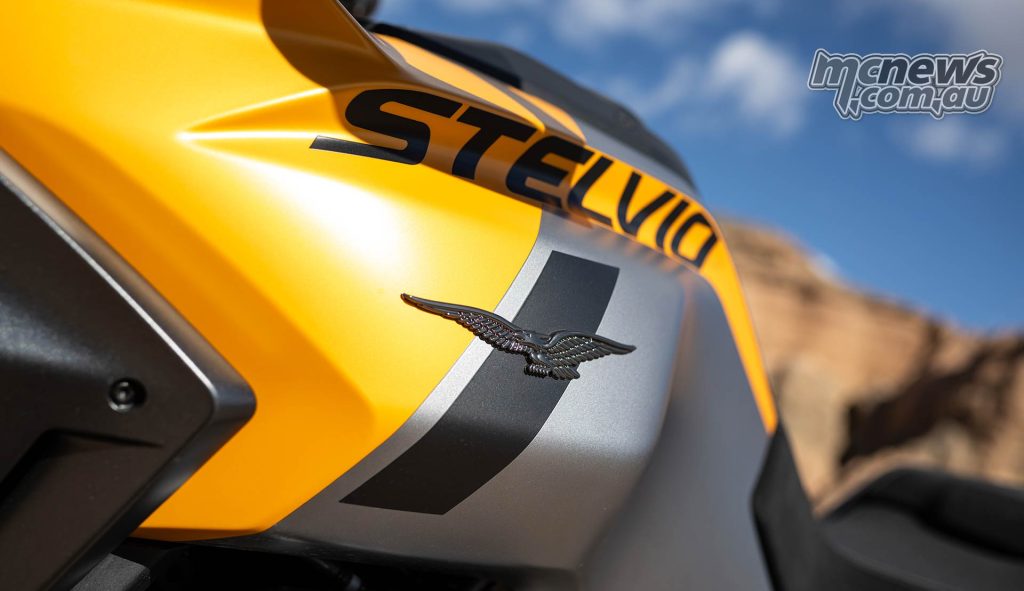
It’s often said you could paint many bikes black, and most wouldn’t be able to tell the difference from the handlebars. This is absolutely not the case with Moto Guzzi. The trademark rock and roll of that funky-mounted motor, to the soaring Mandello del Lario eagle on the tank, it all oozes Italian quirkiness and charm.
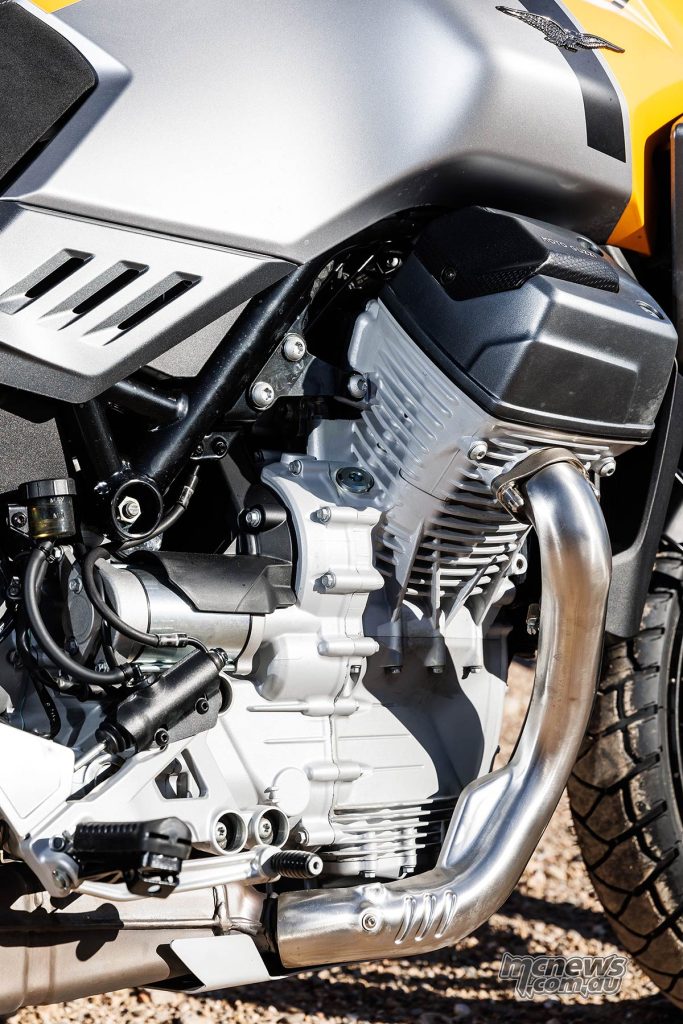
The last five years have seen Moto Guzzi really start to capitalise on its heritage and build on their place in the market with a slew of very good new bikes. The V85TT, various V7’s and the splendid V100 Mandello S have all made splashes of various size and note, the latter housing Moto Guzzi’s first water-cooled motor in its over 100 years of production.
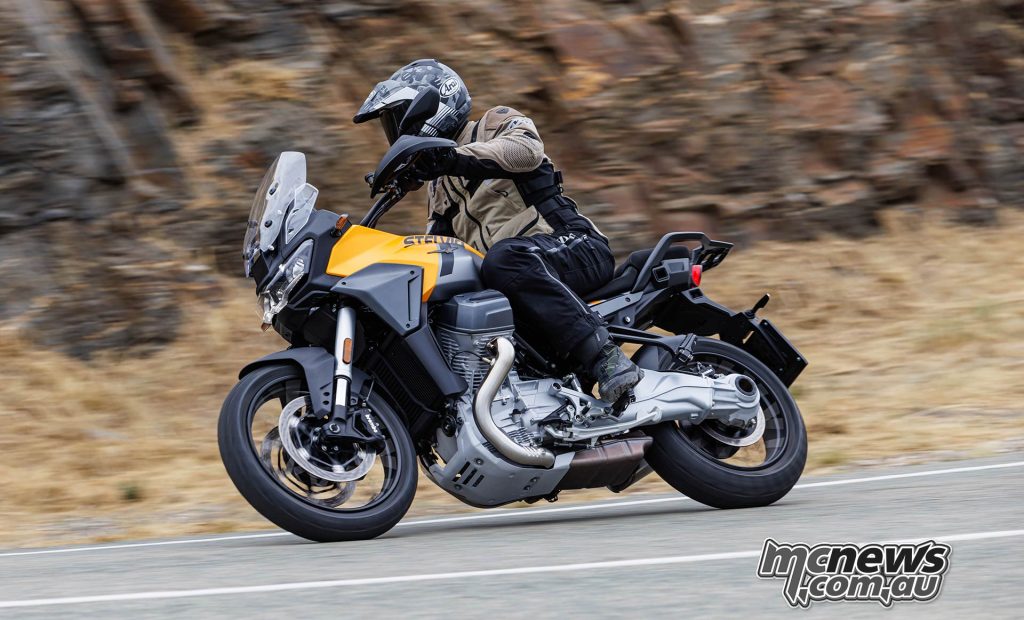
And now we have the bike that probably should never have been dropped from the Moto Guzzi line-up in the all-new Stelvio. The Stelvio ran initially from 2008-2017 but was dropped from the range for 2018 as Moto Guzzi began the process of reinvigorating its line-up and position in the market.
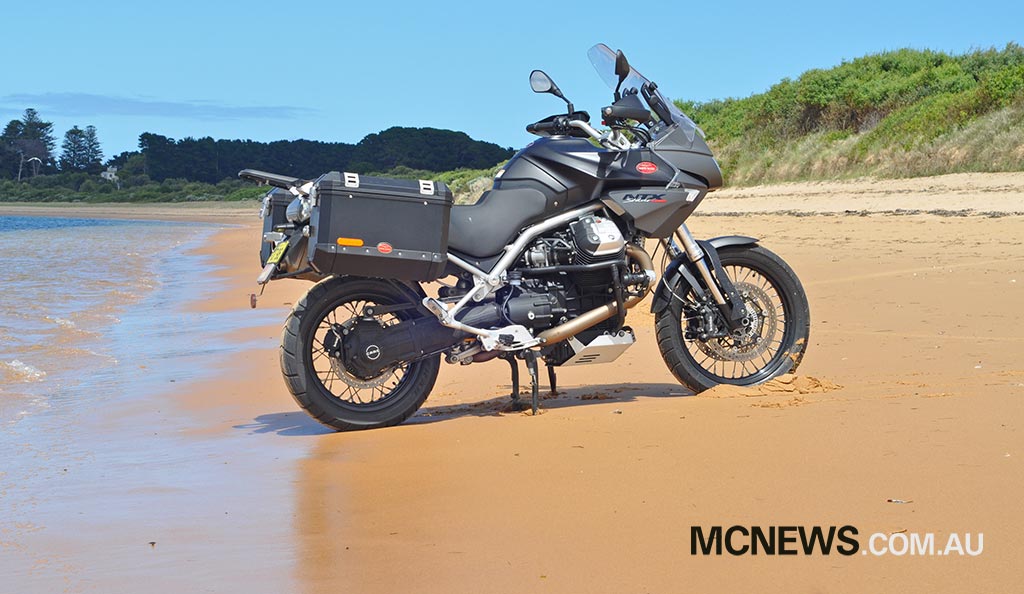
Development of the Mandello S and the Stelvio happened in tangent, but there’s a few obvious differences between the two, such as the 19-inch front wheel, higher handlebar position, taller windscreen and the lack of winglets that adorn the Mandello.
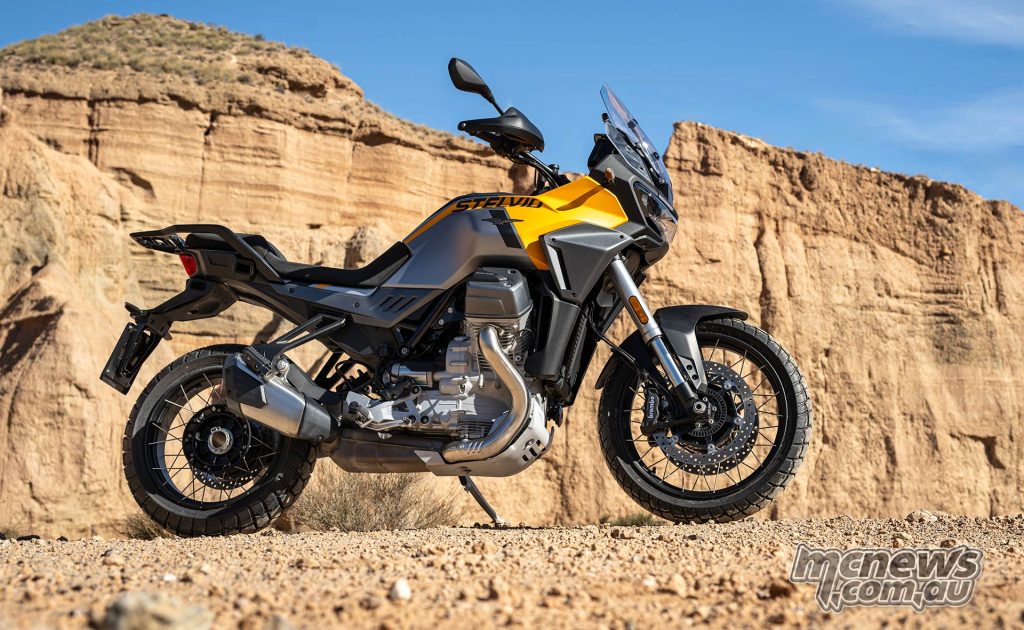
You still get the beautiful 1042cc transverse-mounted V-twin that pumps out a claimed 115 hp and 105 Nm of torque, which puts it right around the Ducati Multistrada V2 and Triumph Tiger 900 range. Said power is pushing a claimed dry weight of 222 kg via the only shaft drive in this class category (the BMW R 1300 GS is the next category above).
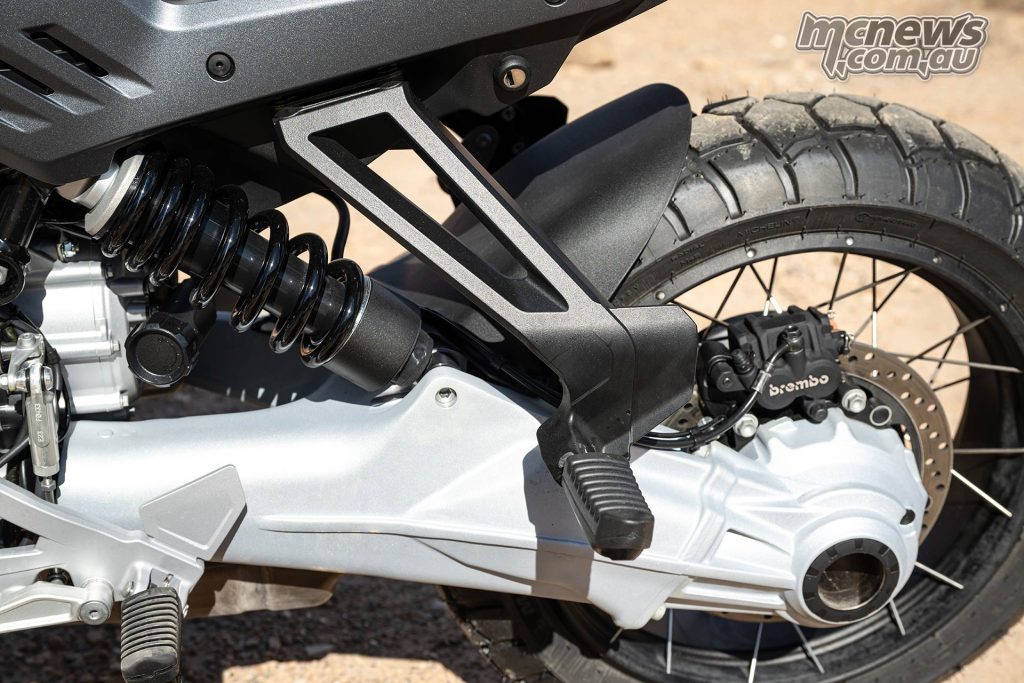
The performance offered by the 1042cc V-twin is one of the Stelvio’s most delightful surprises. The power range is expansive, defying the typical Guzzi stereotype it eagerly revs beyond 8000 rpm.

Keep the V-twin singing between 3-7000 rpm, and you’ll be right in the sweet spot. This is where the Stelvio produces most of its torque, allowing you to pick fourth or fifth gear, and happily surf up and down the rev range without needing sixth gear, unless you’re gunning it on the freeway.
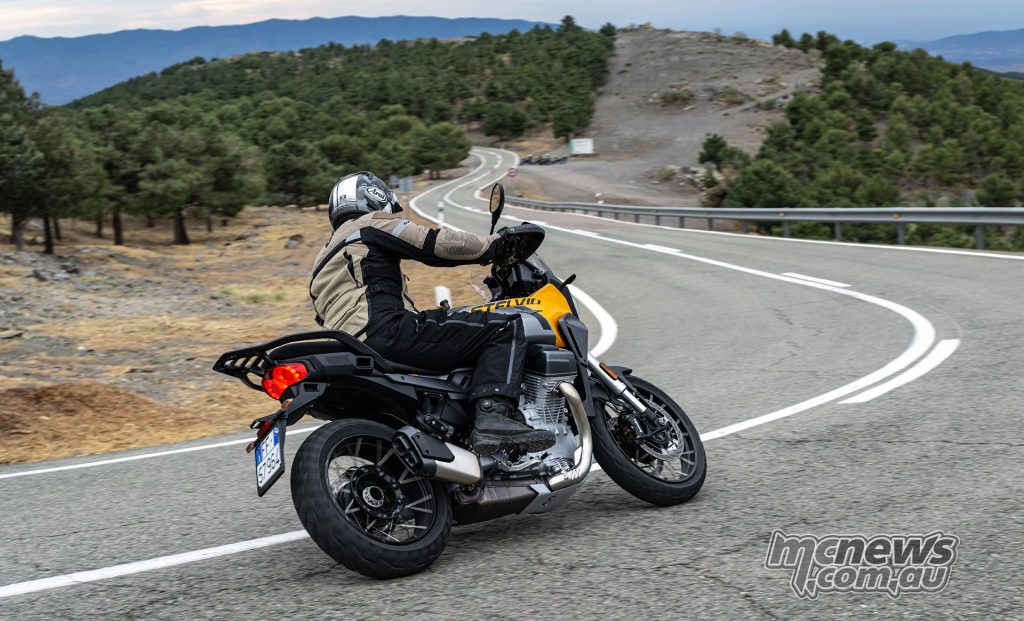
Incidentally, I saw 227 km/h flash up on the dash while refusing to tuck in. I wanted to see just how hard the engine pulled at the high revs while still keeping a sport-touring posture (don’t ask me why, I still don’t know).

I can reassuringly say the water-cooled motor is a major departure from traditional Guzzis as it loves to rip through the tachometer with great top-end performance. It’ll still happily tootle around at low revs and pull tall gears in a sedate style, if that’s the mood you are in.
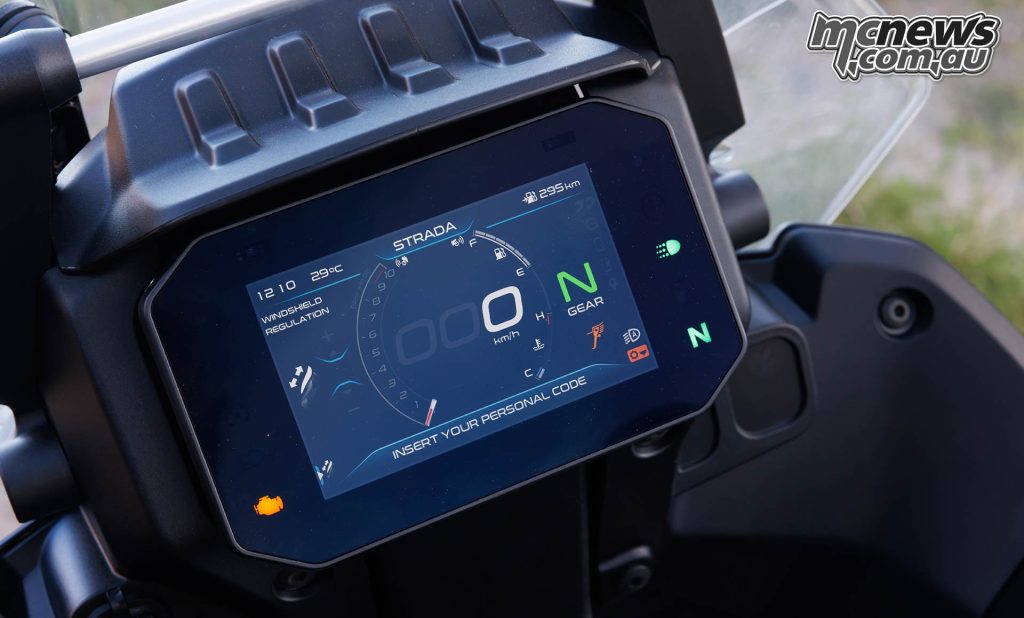
Throttle response and thus engine performance is tamed through five riding modes – Rain, Tour, Road, Sport, and Off Road – and is changed via the rather small but intuitive five-inch TFT display. Although the performance gradually increases as you go up the through the modes, the maximum horsepower remains the same at 115.
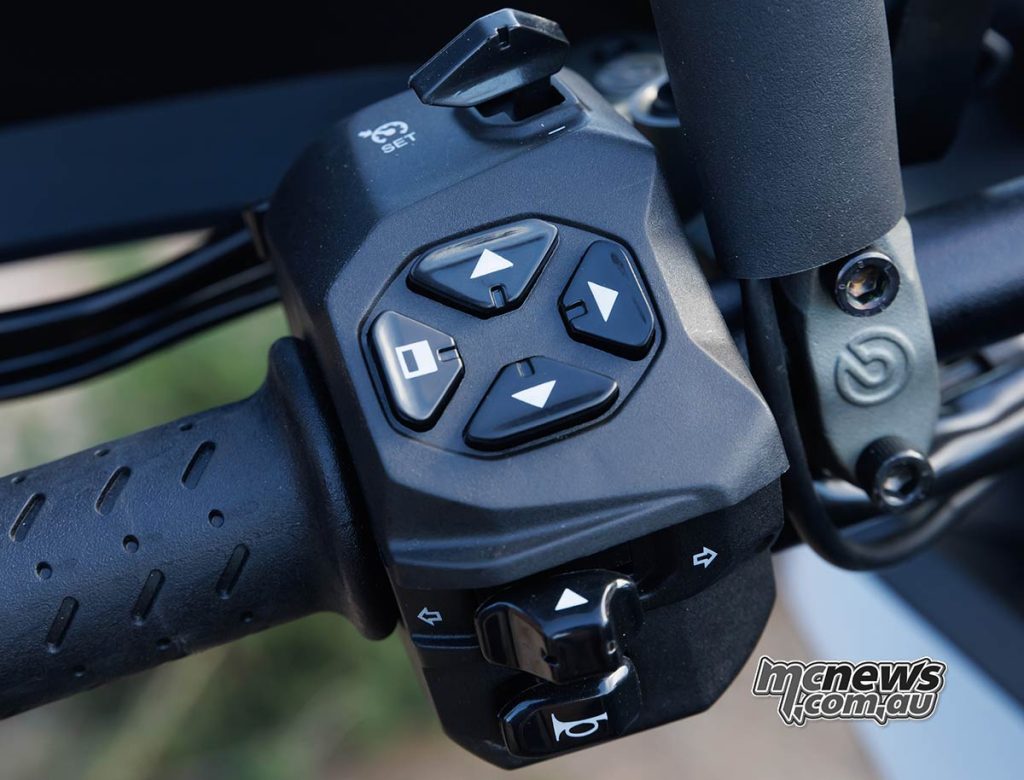
The switch-gear is familiar to anyone who has ridden an Aprilia RS660 and or Tuareg models, and may feel a tad plasticky in comparison to rivals, but considering there’s not a massive amount that can be changed on the Stelvio they work well enough.
Regardless of the mode you choose, the throttle response is reassuringly smooth, with the trademark Guzzi sway inherent with this engine architecture still evident but greatly reduced over Guzzis not even five years old.
The Stelvio exhibits minimal driveline lash, which some purists might come to dislike, but it ensures a remarkably fuss-free ride, with power delivered seamlessly to the rear tyre via the shaft drive.
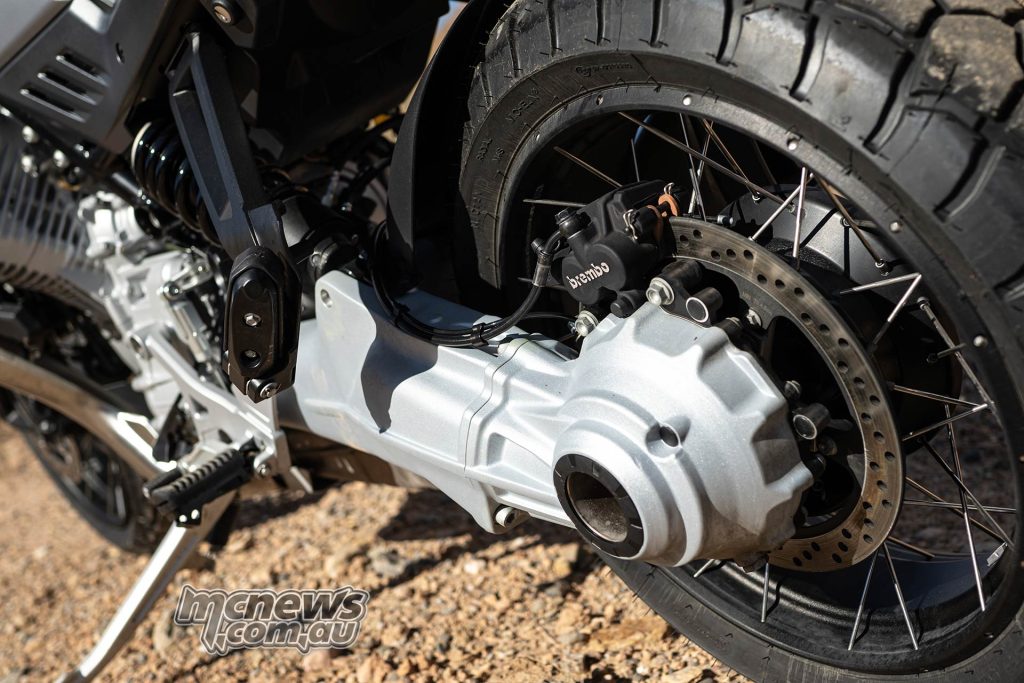
Between the crank and the shaft is a six-speed gearbox with a redesigned shift fork and anti-hopping clutch for smoother gear changes, a lesson learned from two years of Mandello V100 S production. In the U.S. the quick-shifter is an optional extra, we are unsure whether that situation will be the same here in Australia, as local pricing and standard specification is yet to be confirmed.
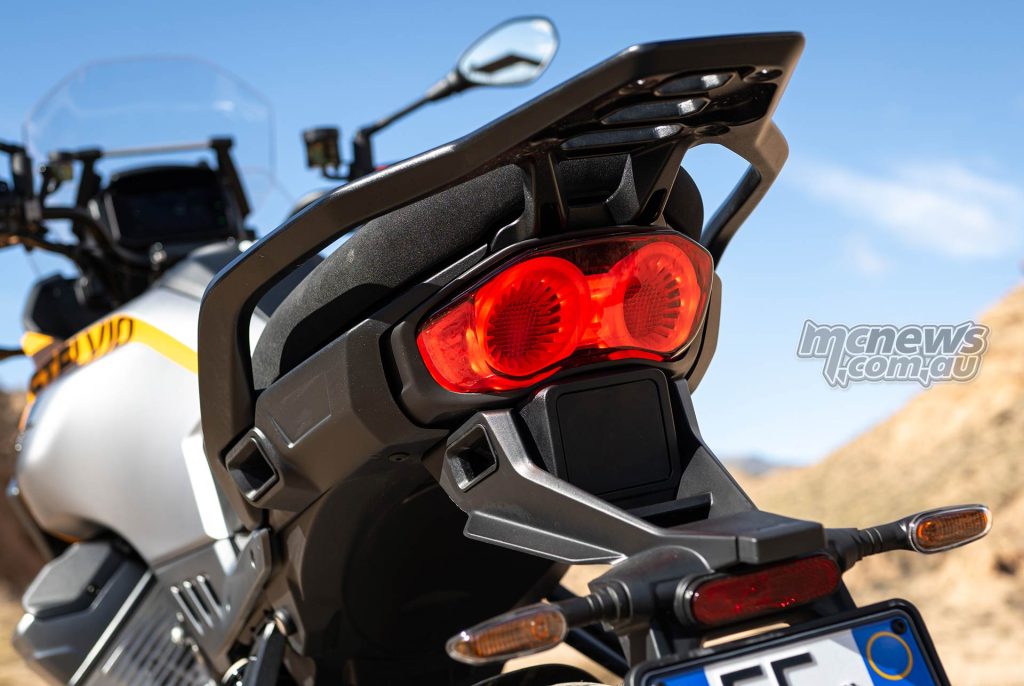
The PFF Rider Assistance Solution that houses the radar-adaptive cruise control (called Following Cruise Control in MG speak), Front Collision Warning, Blind Spot Information System and Lane Change Assist features is also an optional extra in America. Only a basic cruise control, not adaptive, is part of the base specification for the U.S. market. On top of that, Americans don’t get heated grips as standard fitment, nor any of the other niceties like heated seats, or the 29 and 30-litre accessory side cases.
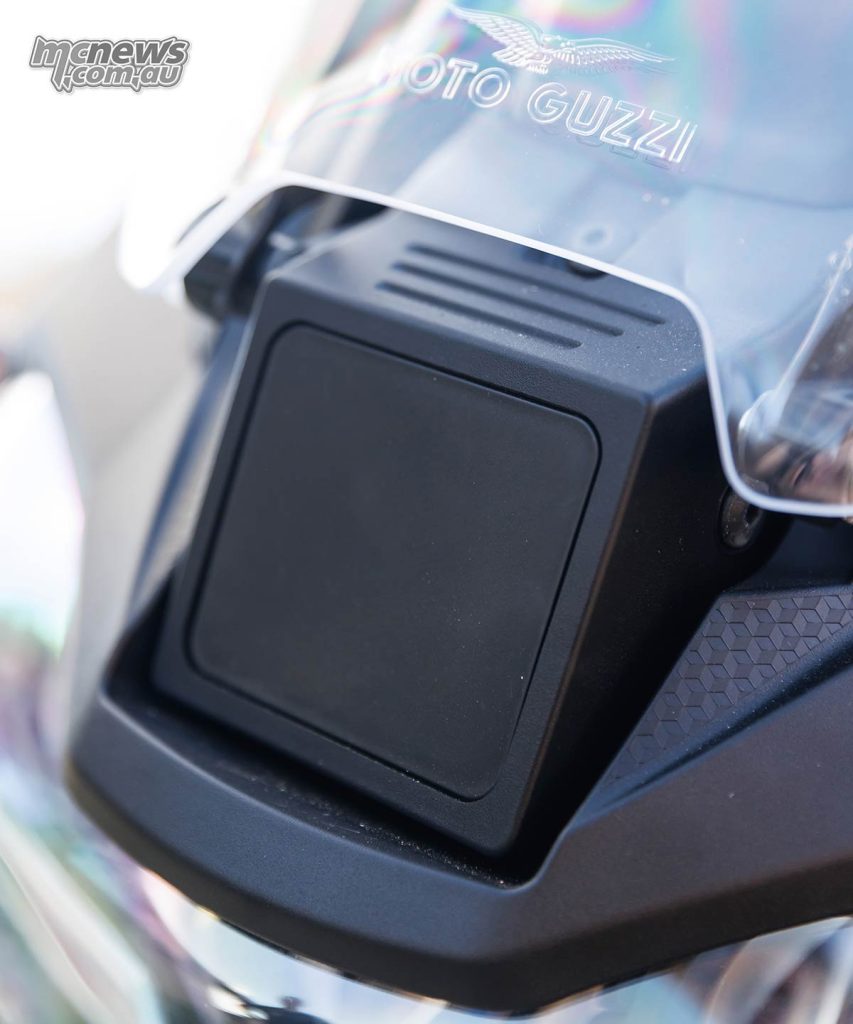
Interestingly, our testbike was a pre-production unit that came with the front collision, blind spot and lane change features activated, but not the radar-assisted cruise control, so I can’t comment on the latter’s performance.
However, the front collision warning is interesting in that it’ll give you a warning via a little light on the dash if you get too close to the car/bike/truck in front. It proved rather annoying when riding in a tight group as we charged up the hairpins of Almeria’s Olula de Castro pass in southern Spain.
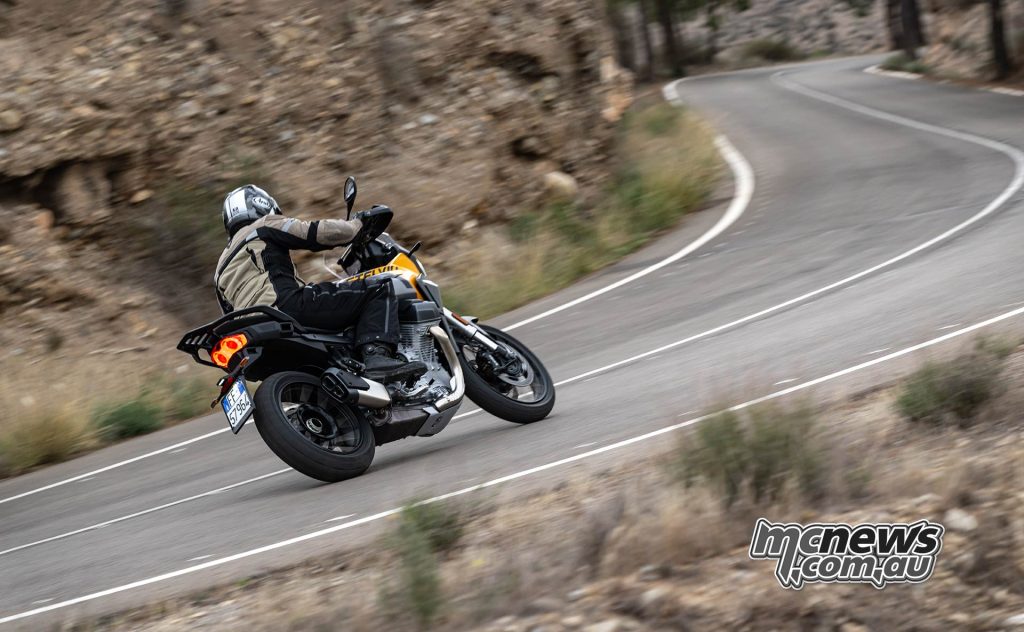
If you’re about to run up the ass of a car, you’ll also get a little noise from the dash, but I suspect/hope your mind will be on other things.
The suspension offers what these days we would describe as fairly basic pre-load and rebound damping adjustments in both the conventional shock and chunky 46 mm Sachs forks, but the ride quality is well sorted. There is 170 mm of travel at both ends.

The Stelvio isn’t the fastest steering tall bike out there but it’s plenty confidence inspiring. You can scratch along at a decent clip without worrying about decking the foot-pegs. Push it too far, and the front Michelin Anakee can start to wander in the middle of the corner, but you have to be really pressing on before that presents itself. (Rennie is the Pikes Peak lap record holder).

Cornering ABS is standard fitment and is activated after you’ve given the Brembo four-piston calipers too hard of a squeeze. These calipers are the 4.32 model, which is now over 10 years old, but aside from looking pretty dated, they are more than up to the job. The master-cylinder is the same as used on the Mandello, which goes a long way to enhancing the feel you get at the front brake lever.

It’s a very comfortable ride, and Moto Guzzi has done well to give you a push-button screen that actually deflects the oncoming wind rather than angle it straight into your helmet.

With a seat height of 830 mm, it’s a somewhat tall steed, but my 183cm frame fits almost perfectly within its confines. I suspect the big mile riders will find little to complain about when they sample a smooth-running Stelvio.

Our dirt riding on the Stelvio launch was limited to just the area where we took the photos, so I can only comment slightly on its dirt prowess. Honestly, it feels like most other large on-road/ADV bikes out there. It’s a little top-heavy but overall not too difficult to ride in silty top soil, although the road-specific Michelin Anakee rubber didn’t really help matters. Having said that, the Stelvio’s ultra-smooth low down power delivery was a blessing on the limited dirt riding we did, but a proper off road test with good knobby rubber would be of more benefit to the reader than I can provide here.
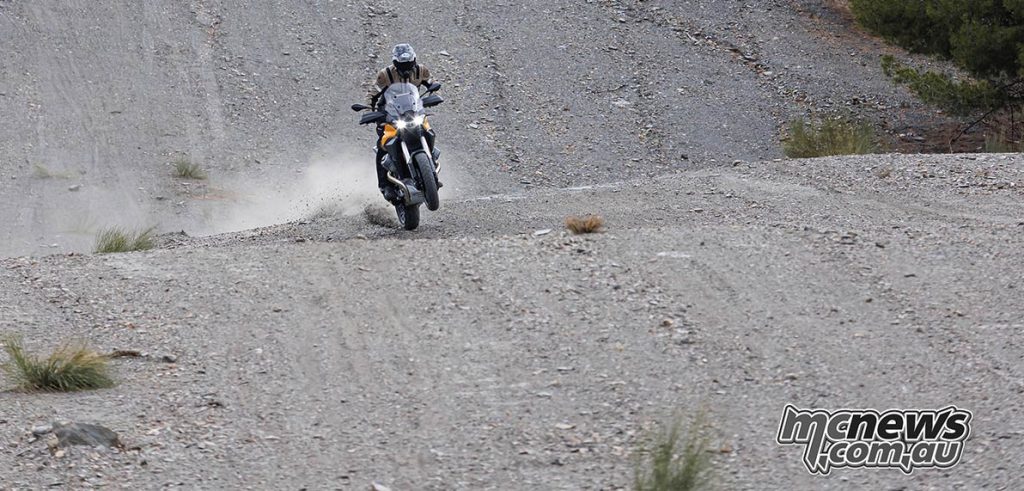
The Stelvio struts back onto the market against some pretty stiff competition—Ducati Multistrada V2, Triumph Tiger 900, Honda Africa Twin, Suzuki V-Strom 1050, for example—but none of the aforementioned models can lay claim to the pure lust that a Moto Guzzi can inspire in many.
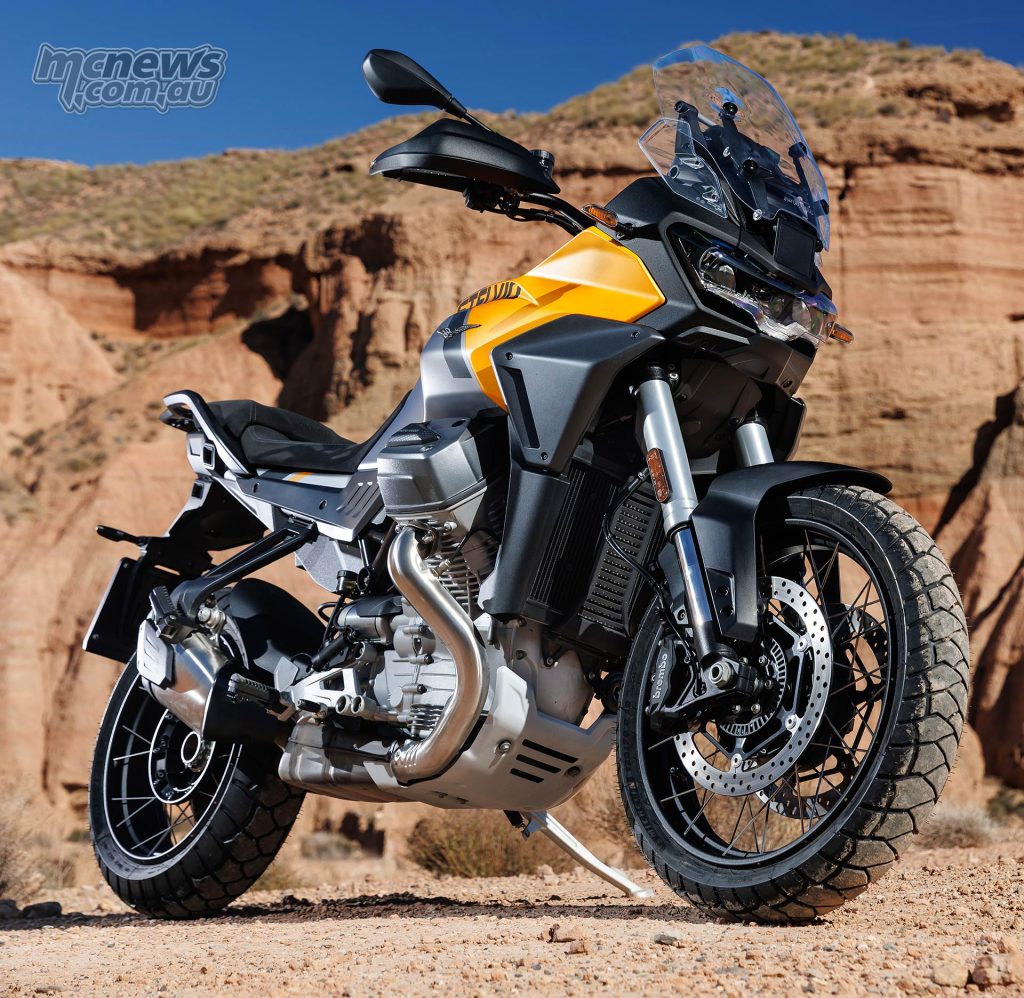
There’s something about a transverse Guzzi twin that has captivated riders for generations, and it’s nice to find the Stelvio is a serious contender against many of its contemporary counterparts, from both Europe and Japan.
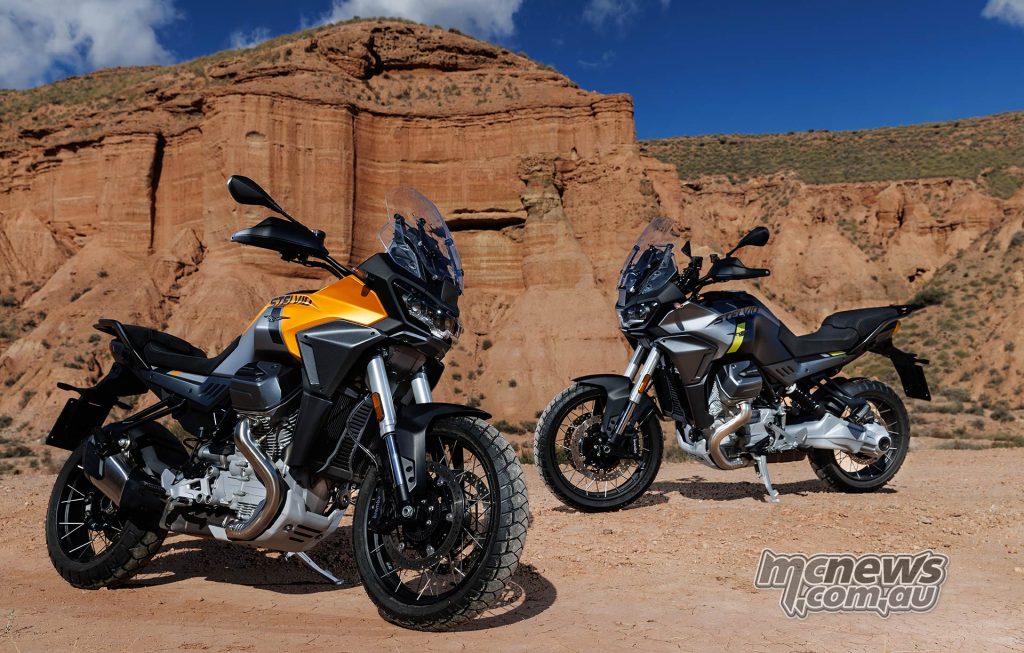
It’s so much better than the last Stelvio we saw in the mid-2010s it’s hard to believe it’s from the same factory. Nice to see that most eccentric of brands revamping one of its most popular names, and finding that the Stelvio actually lives up to the hype.
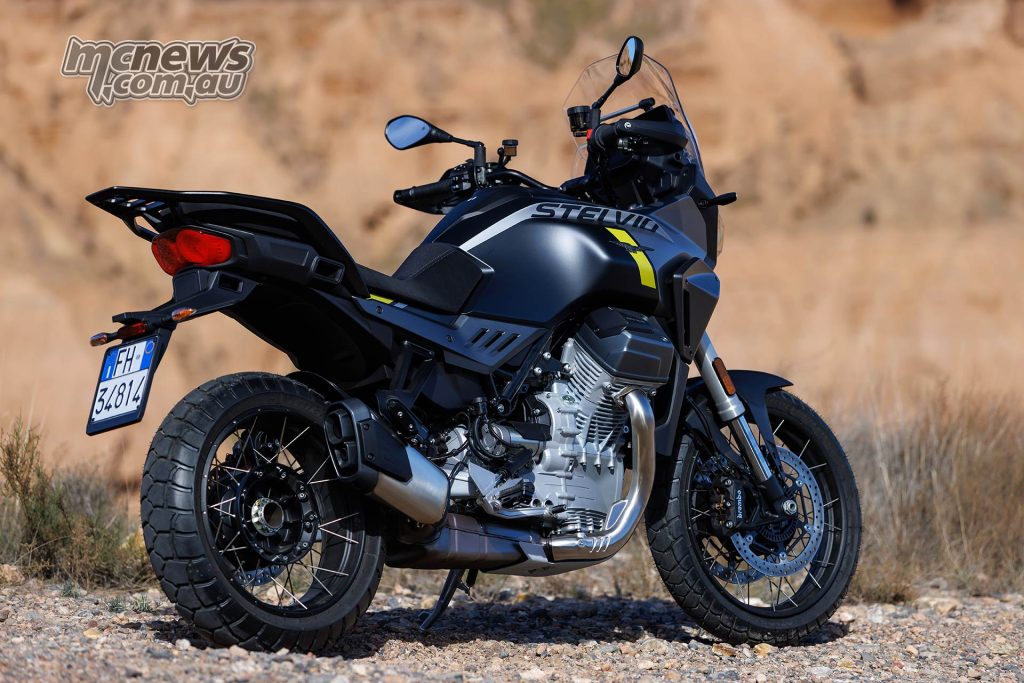
Moto Guzzi Stelvio Specifications
| Moto Guzzi Stelvio Specifications | |
| Engine | 1042 cc, Liquid-cooled 90° transverse V-twin cylinder |
| Bore x Stroke | 96 x 72 mm |
| Compression Ratio | 12.6:1 |
| Power | 113 hp (84.6 kW) at 8700 rpm |
| Torque | 105 Nm at 6750 rpm |
| Valve Actuation | DOHC with finger rocker arms and four valves per cylinder |
| Induction | EFI, dual 52 mm throttle boddies, ride-by-wire |
| Fuel Capacity | 21 litres |
| Gearbox | Six speed |
| Clutch | Wet multi-disc clutch with slipper clutch and hydraulic control |
| Frame | Tubular high-strength steel frame |
| Front Suspension | Sachs telescopic hydraulic upside-down fork, Ø 46 mm, adj. pre-load and rebound. 170 mm travel |
| Rear Suspension | Aluminium single-sided shock absorber left side, adj pre-load and rebound. 170 mm travel |
| Front Brakes | Dual stainless steel floating discs, Ø 320 mm, Brembo radial-mount callipers with 4 opposed pistons and metal braided hose |
| Rear Brake | Stainless steel disc, Ø 280 mm, Brembo floating 2-piston calliper. |
| ABS | Continental ABS with cornering function |
| Tyres | 120/70-19 (F); 170/60-17 (R) |
| Length | 2195 mm |
| Width | 945 mm |
| Wheelbase | 1520 mm |
| Seat Height | 830 mm |
| Steering Angle | 25.6-degrees |
| Trail | 116.4 mm |
| Dry Weight | 222 kg |
| Wet Weight | 246 kg with 90 per cent full tank |
| Available | September, 2024 |
| RRP | TBC |










